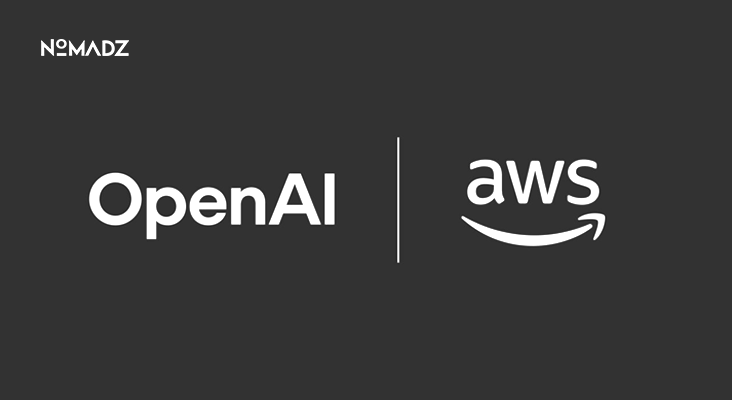Blockchain Technology: Types and Features
Blockchain technology is like a super-smart online notebook. It helps people and companies store and share information safely; no one can cheat or change it. Many people first hear about Blockchain because of Bitcoin and other digital currencies. But there’s so much more to it!
This blog discusses the various forms of Blockchain, emphasises its cool aspects, and shows where individuals use it today. If you enjoy technology and want to learn about blockchain, this is a fun and easy starting point.
What is Blockchain Technology?
Blockchain is similar to a chain made up of blocks, each containing significant information. When users fill a block, they link it to another, making the chain longer. Blockchain stands out because no one can change what they’ve already written.
Everyone who is part of the network gets to see it, and that makes everything truthful. When people hear ‘blockchain,’ the first thing they think of is Bitcoin. But it’s also used in games, art, voting, etc. To become a blockchain developer, one first has to learn Blockchain fundamentals.
Also Read: 5G Technology: Top Characteristics and Advantages
Types of Blockchain Technology
When you learn Blockchain development, understanding the various types of Blockchain and what makes each unique is truly worthwhile. Knowing these types is part of mastering Blockchain basics and helps people and businesses choose the right kind of Blockchain for their needs.
Experts have identified four types of Blockchain technology: public, private, hybrid, and consortium. They are different based on rules, use, and benefits. We’ll look at one type at a time to understand how each works and when to use it.
1. Public Blockchain
A Public blockchain is accessible to the public. You can join in, view the data, and participate. Public blockchains are completely transparent. All the data is accessible to all. No permission is required to use them. Many individuals rely on public blockchains – they are safe, fair, and secure.
Blockchain crypto, like Bitcoin, is a great example of a public Blockchain. Individuals use it to transfer funds, verify transactions, and create new applications.
2. Private Blockchain
A private blockchain differs in that it is only accessible to a select group. Only a few individuals or companies can become members. It is a private club where only approved members can read or write data. Large corporations commonly use private blockchains to secure and keep data hidden from the public.
For example, a hospital uses a private blockchain to store patient information. Doctors, nurses, and workers with special permission can view or modify the information.
3. Hybrid Blockchain
A hybrid blockchain is a mix of public and private blockchains. It provides the advantages of both. Some are public, so visible to everyone, and others are private, accessible only to a few. Suppose a school uses a Hybrid blockchain.
Schools can make their class schedules public so that everyone knows them. However, student grades and private data would be kept in the private section. In this way, the school can be both transparent and secure.
4. Consortium Blockchain
A group manages the consortium blockchain, rather than one person or company. The group can consist of businesses or organisations that collaborate. All members of the group have control and decision-making. Consider a school team project where all team members vote on what to do next.
That’s how a consortium blockchain operates. For example, a set of banks can establish a shared blockchain to monitor money transfers.
Also Read: Online Casino Bonus: Best Sign-Up Offers & Free Spins
Features of Blockchain Technology
Now that you understand the types, let’s explore what makes blockchain technology great. These features are why blockchain is trusted and utilised. If you wish to learn blockchain development, knowing its features will enable you to create better apps, games, and tools.
Decent Decentralised
One big feature of blockchain is that no person or company controls it. Instead, everyone who uses the blockchain shares control. This makes things fairer and prevents people from cheating or changing data.
Secure
Blockchain is very safe. Once added, data can’t be modified or erased because secret codes seal each block. When someone attempts to modify it, the blockchain recognises it. That strong security is why millions of individuals trust blockchain crypto.
Transparent
All users on the blockchain view the same information. Nothing is secret, which is very fair. This is one of the key ideas in blockchain basics: transparency. Anyone can verify records and ensure everything is correct on public blockchains. For example, gamers can see the rules and rewards in blockchain-based games.
Fast and Always On
Blochain doesn’t rest. It operates 24/7, so you can spend money, modify data, or make any changes. You don’t need to wait for a bank or office to open. It also handles data quickly, which is excellent for apps, games, and tools requiring real-time updates.
As you learn about Blockchain, you’ll understand how much power this speed can be.
Conclusion: Blockchain is the Future
Blockchain technology is revolutionising the way information is shared securely, transparently, and efficiently. With its four key types—public, private, hybrid, and consortium—this tech supports everything from finance to gaming and the arts. Mastering blockchain today opens doors to endless innovation and career opportunities. Ready to harness the power of digital transformation?
Partner with Nomadz Digital and Innovation for cutting-edge 360° digital marketing solutions that elevate your brand and drive success in the digital era. Let’s build your future together—today.
FAQs
Q. What are the 4 types of Blockchain technology with examples?
A. Public, private, hybrid, and consortium.
Q. What are the 5 layers of the Blockchain?
A. They are the hardware, data, network, agreement (consensus), and app layers.
Q. What is a layer 4 Blockchain?
A. Layer 4 is user-facing interfaces and services that communicate with the underlying blockchain technologies.
Q. What are the features of Blockchain?
A. Blockchain provides security, ensures transparency, and stores permanent data that no one can alter.
Q. Why should children learn about Blockchain technology at an early age?
A. It enables them to comprehend future technology and develop smart apps or games.









Leave feedback about this